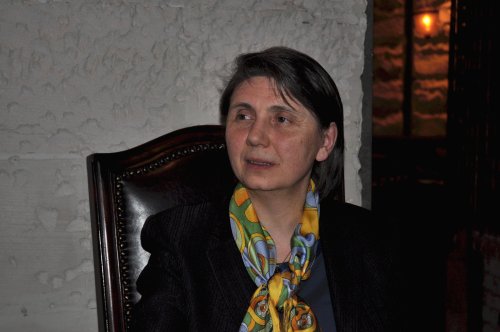Recently, the Czech Republic decided to change its course on the road toward a green growth program.
Almost a year after entering the European Union, the Czech Parliament passed acts in 2005 to support production from renewable energy sources, but along the way, it found that due to the country’s geographical position, environment and other conditions, that policy would not be beneficial.
Now, the Czech government’s policy is looking toward energy efficiency instead of revamping an entire system that relies heavily on energy produced by fossil fuels.
“We don’t have a green growth strategy in the Czech Republic but we would like to learn from Korea on how to have a more energy efficient economy based on the protection of the environment,” said Czech Deputy Environment Minister Rut Bizkova.
Half a decade ago, Czech law promised significant benefits for businesspeople to invest in renewable energies. As a result, investments in photovoltaic energy took off.
The problem with photovoltaic energy in the Czech Republic is the lack of sunlight during the cold winter months.
“We learnt a lot from our experiences because in the summer, when our consumption is low, it works, but not in the winter,” she told The Korea Herald.
The same challenge was presented to Czech industries when wind energy was discussed; a landlocked country with little wind makes wind turbines not such a hot prospect for the future.
“Our economy is very similar to the Korean one,” she said. “We have many heavy industries so we think that our future lies in more efficient ways of producing and saving energy like materials.”
Greener energy does not stop with industry Bizkova said; her ministry is also looking at ways to improve the energy consumption radiating from regular households.
 |
Czech Republ ic Deputy Environment Minister Rut Bizkova (Yoav Cerralbo/The Korea Herald) |
The Czech Republic has many old, yet beautiful homes. While those buildings give off a charming aura for tourists, the downside is shown when the heating bill comes at the end of the month.
So far, their initiative in reducing the amount of CO2 from households has proven successful.
The Czech Republic planned to reduce the amount of CO2 by 8 percent compared to 1990.
Instead, they ended up reducing it by 27 percent with the surplus sold to other countries like Japan as part of a carbon trading scheme that has made it possible for the Czech Republic to further invest in the insulation of more buildings.
One tough challenge right now for the Czech Republic is the recycling of precious and rare materials found in everyday products like mobile phones.
“It’s important to recycle them and we want to learn from Korea about material efficiency,” she said.
In 2007 the European Union’s leaders committed Europe to transforming it into a highly energy-efficient, low carbon economy.
To kick-start this process, the EU set a series of demanding climate and energy targets to be met by 2020, known as the “20-20-20” targets.
Some countries within the European Union welcomed the move and found avenues for eventually reaching a successful outcome while other countries have heavily criticized the initiative as too ambitious.
“The EU trading scheme part of this goal, which targets industry, is very difficult because industries are not able to adapt in a short period of time,” Bizkova said. “If a country attracted new investments several years ago, some of those investments like heavy industries are already reliant on the existing system for the next 40 years.”
But that is just one part of the deal that poses a challenge, other parts of the initiative like energy efficiency are possible, she noted.
By Yoav Cerralbo (
yoav@heraldcorp.com)








